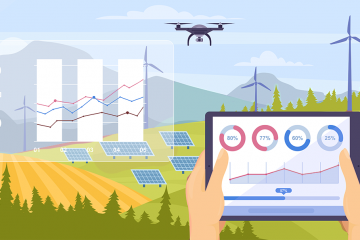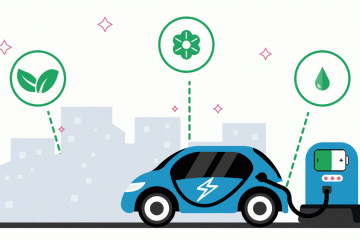According to the World Health Organization, air pollutions kills over 7 million people worldwide every year. The WHO claims that 9 out of 10 people breathe in harmful air with high pollutant levels. An average adult breathes around 3000 gallons of air every day. It is best to ‘Know What You Breathe’. To empower the common man with real-time data, Ambee has launched Global Air Pollution. to make hyperlocal air quality index (AQI) easily accessible. This was built on the realization that 99.99% of the people do not have access to accurate ambient air data.
“You cannot manage what you cannot measure.” – Bill Hewlett, Co-Founder of Hewlett-Packard Company
Air quality data helps quantify and visualize pollution levels with live maps, graphs, and visual representations. This data stresses the need for air purification. In an ideal world, we would get rid of the big green monster that is air pollution. In reality, it is a long term continuous work in progress to reset worldwide pollution to healthy levels. Therefore, it is important to take steps to reduce air pollution and purify the air.
Air pollution is well-known to be a major contributor to global warming and climate change. It not only leads to 9 million deaths worldwide due to outdoor and indoor air pollution but also causes a total loss of $5.2 trillion to the world economy.
Increase in Indoor Air Pollution and its Effects
Most people spend the majority of their time indoors at homes, offices, schools, gyms, or cars. Over the past decade, a rise in poor indoor air quality has driven the need for air quality data and air purification.
Indoor air pollutants are a result of human activity, chemical reactions, and construction residue. Sources of these pollutants are cooking, fireplaces, candles, bacteria, asbestos, and mold.
According to Scientific American, air pollution affects human health as it a major cause for respiratory issues, heart diseases, cancer, strokes, and early age death.
Indoor air pollutants have neurotoxins that poison the nervous system and negatively impact brain function. Several studies have shown decreased cognitive function with an increase in carbon levels between 1000 and 2500 ppm. This carbon amount is consistent with indoor spaces such as offices and schools but all hope is not lost.
In 2016, the Los Angeles Unified School District discovered that installing air filters showed a promising increase in test scores. To mitigate the effects of methane leak, LAUSD installed air filters in classrooms for nearby schools. Methane dissipates into the atmosphere so the air filters failed to filter any methane but rather filtered the classroom air. Now, experts gauged student performance with filtered air against the normal level of pollution. The evidence showed that English and Maths went up by 0.18 and 0.20 standard deviation, respectively.
Do Air Purifiers remove Particulate Matter?
Yes.
For instance, HEPA filters purify 99.97% of air and filters out the particulate matter as small as 0.3 microns. They also filter out chemicals, bacteria, viruses, mold, PM2.5, and PM10 without any by-product generation. These filters are mainly used in the medical sector due to their high-efficiency air purification.
Negative Ionic Air Filters inject negative ions that attract particulate matter like dust, pollen, etc. until the particle is too heavy to float around in the air. This air filter is mostly used for commercial air filtration
How Air Quality Data can be Leveraged in Air Filters for Optimal Use.
Smart air filters help manage and regulate indoor air with the help of local air quality data. Installing smart HVAC systems and air filters make lives easier by creating a hygienic living space to work, study, and focus better.
Filters purify the air in your personal space with enhanced control that can be customized to the user’s needs. Hyperlocal air quality data is used for efficient air filtration control. The data gives valuable insights and recommendations to regulate the indoor air, accordingly.
Without addressing the rising issue of indoor pollutants, experts claim that there is a high chance of an 80% increase in asthma cases by 2050. Air purifiers can help mitigate this with accurate real-time air quality data. Air purifier companies can leverage Ambee’s air quality data to build better innovative solutions to better serve their customers. Air quality data makes air purifiers smarter.
Data Accuracy is crucial
Accurate air quality data helps users realize their indoor air composition. Ambee uses local on-ground sensors and satellite imagery to deliver hyperlocal accurate real-time data. Air pollution levels are dynamic and subject to change with location, time, season, etc.
The need for hyperlocal air quality data is apparent as the closest sensor doesn’t provide air quality information for your home. Air levels can vary outside your home and inside your living room. Data accuracy is highly important and prioritized at Ambee with data validation models integrated into AI algorithms. Air filters with built-in hyperlocal air data help optimize the filter function as per the surrounding particulate matter and air pollutants.
There are several types of air filters in the market classified according to their varying technological approach. Each filter serves a different application so ensure to pick the right one that matches the needs of you, your loved ones, and your home.
Purify your air and know what you breathe.
This blog was written by Pushya C, Content Writer at Ambee.




